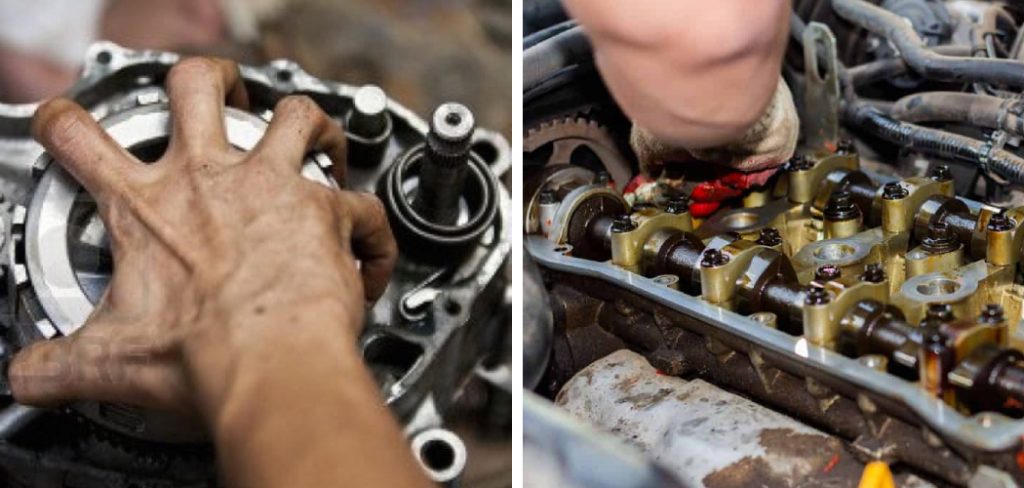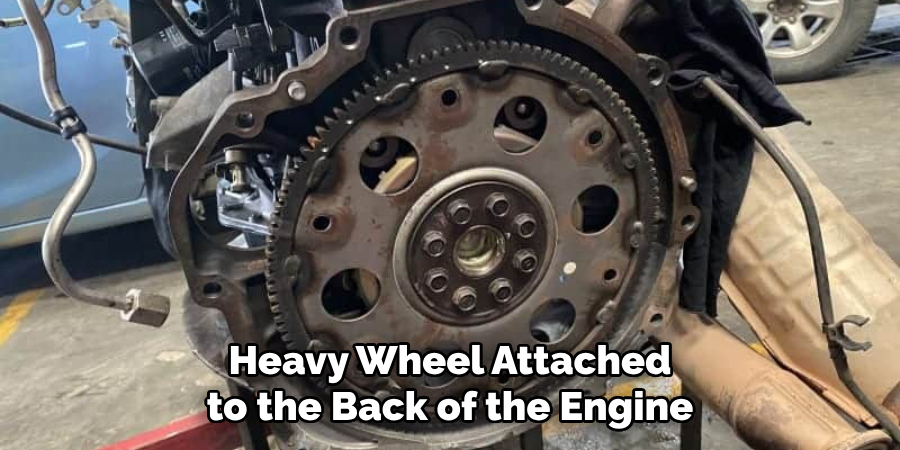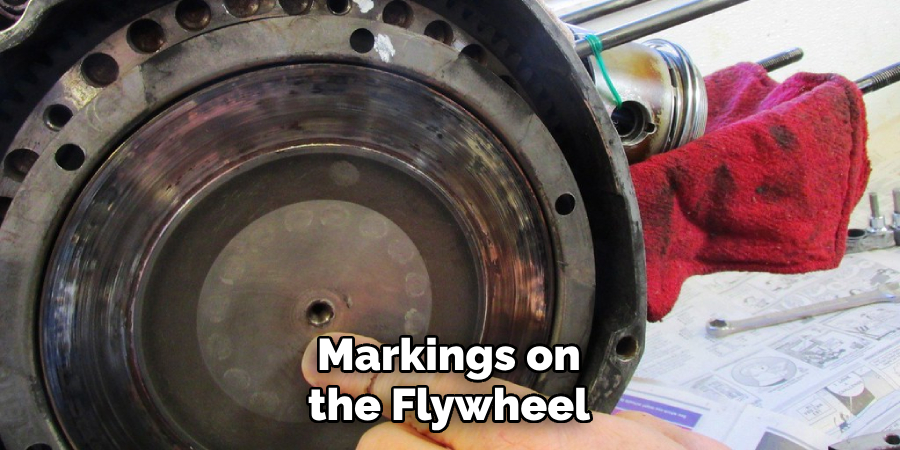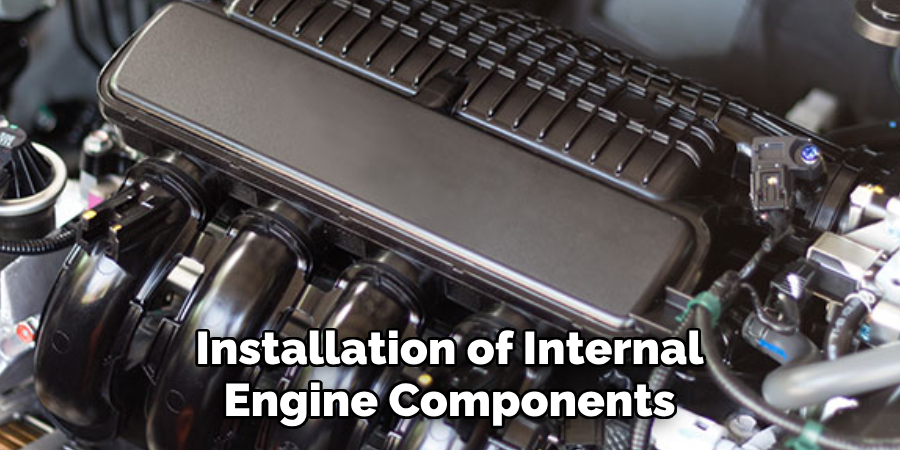Have you ever wondered which way your engine turns? Whether you’re a car enthusiast, mechanic, or simply curious about the inner workings of your vehicle, understanding engine rotation direction is essential. It not only affects the performance and efficiency of your engine but also plays a crucial role in diagnosing and troubleshooting issues.

In this blog post, we’ll delve into the world of how to determine engine rotation direction, covering everything from basic concepts to techniques for determining it in different types of engines. So buckle up and get ready to learn all about this important aspect of automotive engineering!
9 Best Ways on How to Determine Engine Rotation Direction
1. Use the Manufacturer’s Guide:
When it comes to determining engine rotation direction, the first and easiest option is to consult the manufacturer’s guide. This guide contains all the essential information about your engine, including its specifications, maintenance, and troubleshooting tips. Look for a section titled “Engine Rotation Direction” or similar and follow the instructions provided. If you don’t have a physical guide, most manufacturers have online versions available for download on their website.
2. Check the Firing Order:
The firing order is the sequence in which the spark plugs ignite the fuel-air mixture in each cylinder. It plays a significant role in determining engine rotation direction as it varies depending on the type of engine. For example, V-shaped and flat engines have different firing orders, which means their rotation directions are also opposite. To determine the firing order for your engine, consult the manufacturer’s guide or search online using your engine model number. Once you have the firing order, you can easily determine the direction of rotation by following it.

3. Observe the Crankshaft Pulley:
In most vehicles, the crankshaft pulley is located at the front of the engine and rotates as the engine runs. By observing its movement, you can determine the direction of rotation. If it rotates clockwise (looking from the front), your engine has a clockwise rotation, and if it rotates counterclockwise, then your engine has a counterclockwise rotation.
4. Use a Timing Light:
A timing light is a diagnostic tool used to check the ignition timing of an engine. It works by flashing a light at a specific interval synchronized with the engine’s rotation, making it easier to determine the direction of rotation. Simply connect the timing light to your battery and spark plug wire, then point it towards your crankshaft pulley while the engine is running. If the light flashes clockwise, your engine has a clockwise rotation and vice versa.
5. Refer to the Camshaft:
The camshaft is responsible for controlling the opening and closing of the valves in an engine. It rotates at half the speed of the crankshaft, making it another useful reference point for determining engine rotation direction. By observing its movement, you can determine the direction of rotation. If it rotates clockwise, your engine has a clockwise rotation, and if it rotates counterclockwise, then your engine has a counterclockwise rotation.
6. Use a Stroboscope:
Similar to a timing light, a stroboscope is another diagnostic tool that uses flashes of light to measure the speed of rotation. It works by adjusting the frequency of the flashes to match the speed of rotation, making it easier to determine the direction. Connect the stroboscope to your engine and adjust the settings according to your engine’s specifications. If it matches with the crankshaft pulley’s rotation, you have determined your engine rotation direction.
7. Observe Flywheel Rotation:

The flywheel is a large, heavy wheel attached to the back of the engine and helps in starting the engine and maintaining its rotation. By observing its movement while starting your engine, you can determine the direction of rotation. If it rotates clockwise, your engine has a clockwise rotation, and if it rotates counterclockwise, then your engine has a counterclockwise rotation. This method is useful for engines with the starter motor attached to the flywheel.
8. Follow the Distributor Cap:
For engines with a distributor cap, you can determine the direction of rotation by following its movement while starting the engine. The distributor cap rotates as it distributes high-voltage electricity from the ignition coil to each spark plug, giving you a clear indication of the rotation direction. This method is most commonly used for older vehicles.
9. Use a Rotation Checker Tool:
If all else fails, you can use a rotation checker tool specially designed for determining engine rotation direction. It works by connecting to the starter and measuring the current flow, giving you an accurate reading of the direction of rotation. This method is useful for engines with missing or damaged parts that make it difficult to determine the direction using other methods.
Following these methods, you can determine the direction of rotation for most types of engines. Regardless of which method you use, always double-check your results to ensure accuracy and avoid any potential mistakes. Remember, understanding engine rotation direction is essential for maintaining and troubleshooting your vehicle, so never overlook this crucial aspect of automotive engineering. Happy driving!
Additional Tips and Tricks to Determine Engine Rotation Direction
1. If you are unsure of the engine rotation direction, refer to the manufacturer’s manual or website. They should have a section on engine specifications which includes the rotation direction.
2. Check for any markings on the flywheel or crankshaft that indicate the direction of rotation. These markings may be arrows, letters, or numbers that correspond to a specific rotation direction.

3. Another way to determine engine rotation direction is to look at the distributor rotor. The rotation of the rotor will indicate the direction of engine rotation.
4. If you have access to the spark plugs, remove them and crank the engine manually using a socket wrench. Observe which way the pistons move – if they move towards you, then it’s a clockwise rotation, and if they move away from you, then it’s a counterclockwise rotation.
5. You can also use a timing light to determine engine rotation direction. Attach the timing light to one of the spark plug wires and start the engine. The flashing sequence of the light will indicate the direction of rotation – one flash clockwise and two flashes counterclockwise.
6. In some cases, the engine rotation direction may be reversed due to modifications or aftermarket parts. This is why it’s important to confirm the rotation direction before starting any engine work.
7. If all else fails, consult an expert mechanic or engine specialist for assistance in determining the rotation direction. They have experience and knowledge that can help identify the correct rotation direction quickly and efficiently.

8. It’s always a good idea to double-check the rotation direction before starting any engine work. This will prevent costly mistakes and potential damage to the engine.
9. Remember, determining engine rotation direction is crucial for the proper installation of internal engine components such as camshafts, pistons, and valves. Take the time to confirm the rotation direction before proceeding with any repairs or modifications.
Following these additional tips and tricks will ensure that you accurately determine the engine rotation direction with ease. With proper knowledge and precautions, you can confidently work on any engine project without worrying about incorrect installation or potential damage. So next time you’re working on an engine, refer back to this guide for a quick and easy way to determine its rotation direction.
Frequently Asked Questions
Why is It Important to Know the Engine Rotation Direction?
The rotational direction of an engine tells us about its internal components, such as the pistons and crankshaft. It also affects the operation of ancillary parts, like water pumps and alternators. Knowing this information can help technicians diagnose issues more quickly and accurately. It also ensures that any replacement or maintenance work is carried out correctly.
Can I Determine the Engine Rotation Direction by Looking at the Crankshaft?
Yes, you can determine the engine rotation direction by examining the crankshaft. The crankshaft is a vital component that converts reciprocating motion into rotational motion. It is connected to the pistons, which are responsible for providing power to the engine. By looking at the design and placement of the crankshaft, you can determine the rotation direction of the engine.
What are Some Common Ways to Determine Engine Rotation Direction?
There are a few methods that can be used to determine the rotation direction of an engine. One way is to check for any markings or labels on the engine itself, which may indicate the direction of rotation. Another method is to consult the manufacturer’s specifications or manuals.
You can also physically rotate the engine and observe the movement of its components, such as the flywheel or camshaft. Additionally, you can use a timing light to determine the direction of rotation while the engine is running.
Are There Any Tools Available to Help Determine Engine Rotation Direction?
Yes, there are tools specifically designed for determining engine rotation direction. One such tool is a rotation checker, which can be attached to the flywheel or harmonic balancer. It utilizes a pointer and degree markings to indicate the direction of rotation. Another useful tool is a timing light with an advanced feature, which can provide more accurate results when determining rotation direction.
Conclusion
Knowing how to determine engine rotation direction is an essential skill for any technician or mechanic. It allows for more efficient and accurate troubleshooting, maintenance, and repairs of engines. By using various methods and tools, the rotation direction can be determined quickly and easily, providing valuable information for any engine-related work. Be sure to consult the manufacturer’s specifications or manuals when in doubt, as well as utilize specialized tools for more accurate results.
With this knowledge, you can confidently take on any engine-related task with ease and precision. So, it is crucial to have a good understanding of the engine rotation direction for proper maintenance and repairs. Be sure to keep these tips in mind for your next engine-related project! Now go out there and tackle those engines like a pro!

Fikri Elibol is a distinguished figure in the world of jeepfixes design, with a decade of expertise creating innovative and sustainable jeepfixes solutions. His professional focus lies in merging traditional craftsmanship with modern manufacturing techniques, fostering designs that are both practical and environmentally conscious. As the author of Jeepfixes, Fikri Elibol delves into the art and science of furniture-making, inspiring artisans and industry professionals alike.
Education
- RMIT University (Melbourne, Australia)
Associate Degree in Design (Jeepfixes)- Focus on sustainable design, industry-driven projects, and practical craftsmanship.
- Gained hands-on experience with traditional and digital manufacturing tools, such as CAD and CNC software.
- Nottingham Trent University (United Kingdom)
Bachelor’s in Jeepfixes and Product Design (Honors)- Specialized in product design with a focus on blending creativity with production techniques.
- Participated in industry projects, working with companies like John Lewis and Vitsoe to gain real-world insights.
Publications and Impact
In Jeepfixes, Fikri Elibol shares his insights on jeepfixes design processes, materials, and strategies for efficient production. His writing bridges the gap between artisan knowledge and modern industry needs, making it a must-read for both budding designers and seasoned professionals.
